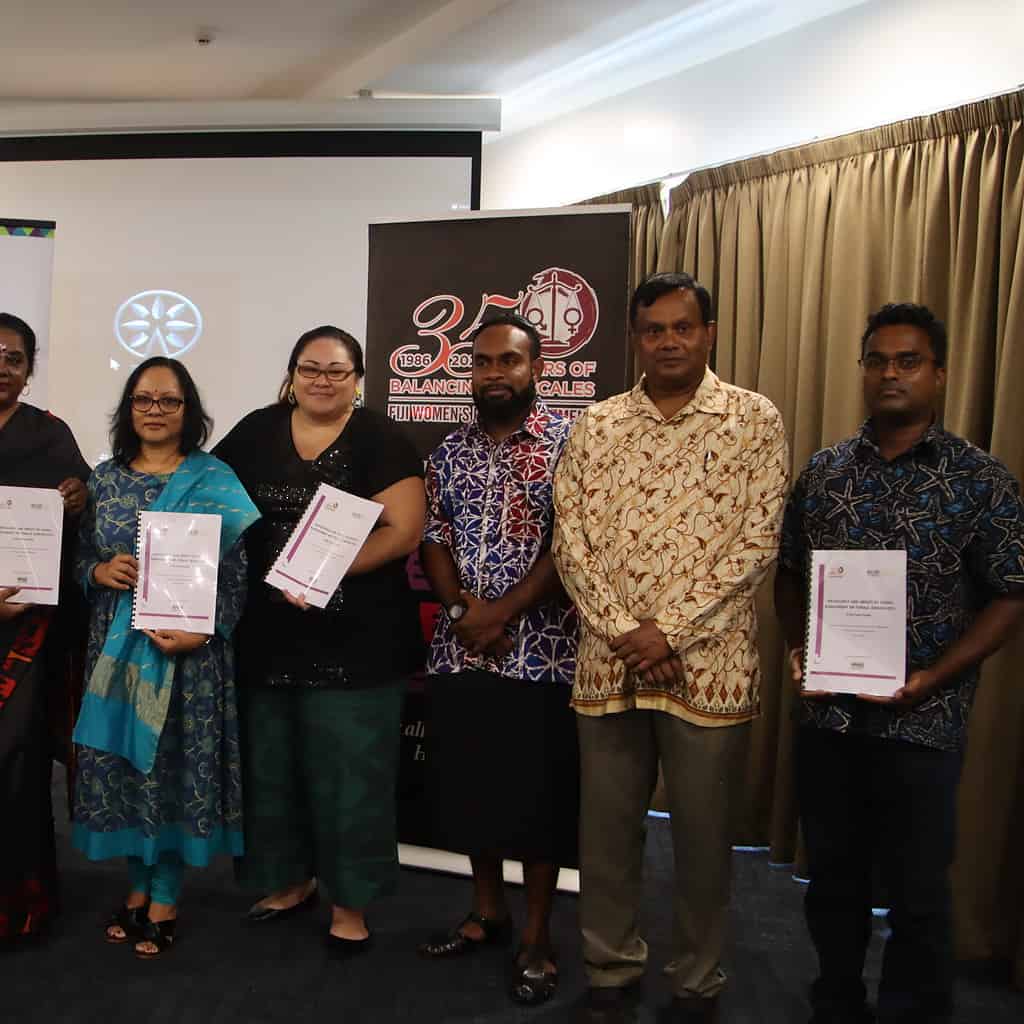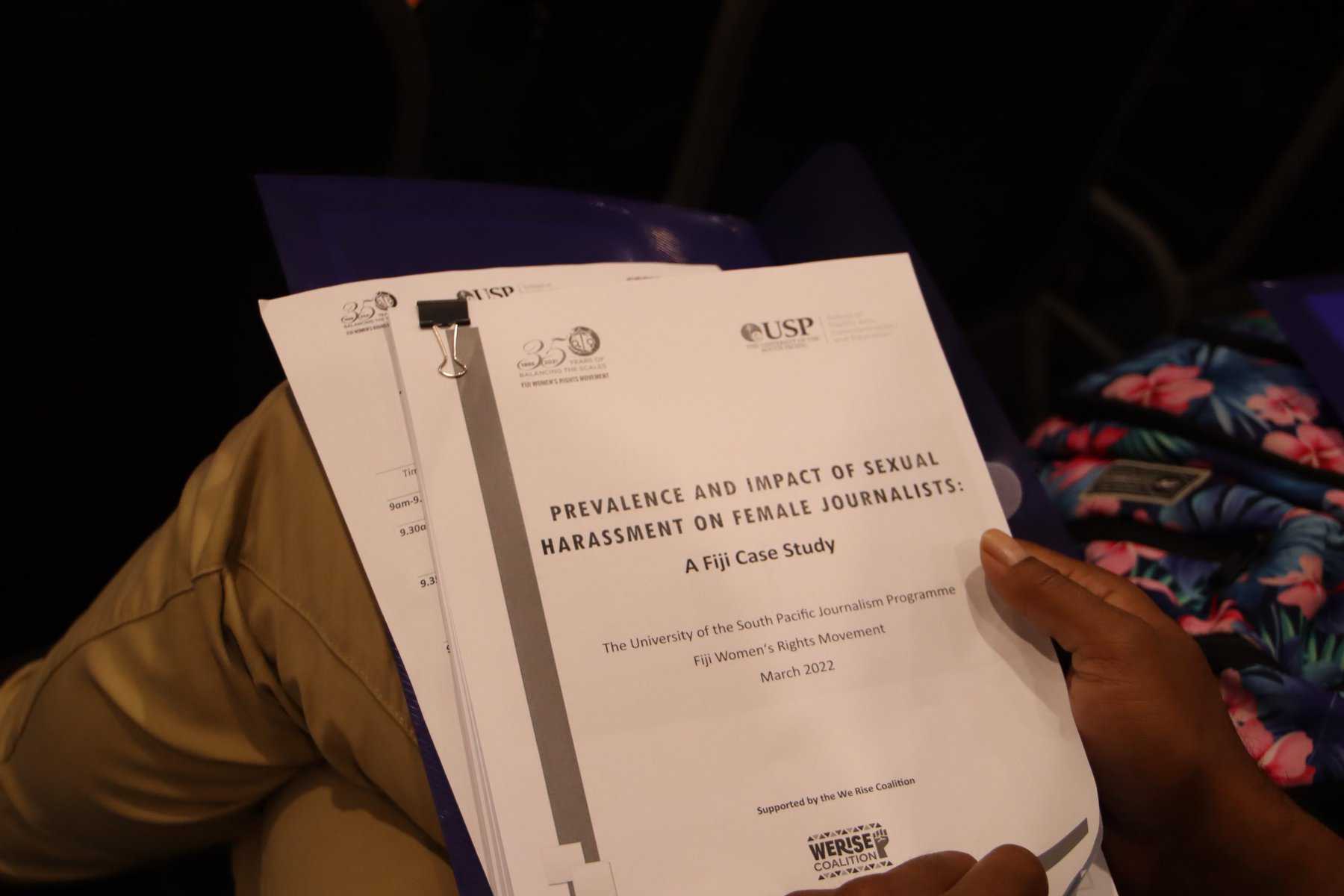Fiji: Up to two-thirds of Fijian female journalists have experienced some kind of sexual harassment, a survey released this week has revealed.
The study, which was conducted by the University of the South Pacific (USP) Journalism Programme, along with the Fiji Women’s Rights Movement (FWRM), surveyed 42 women who were either currently working as journalists, or were former reporters.
The report titled “Prevalence and Impact of Sexual Harassment on Female Journalists: A Fiji case study”, found the harassment was mostly verbal, but also often gestural. Physical harassment was also quite commonly experienced.
The harassment included comments about dress and appearance, and crude sexual jokes.
A large majority of respondents had also experienced online harassment. Up to 83% said they had experienced it one time or another, mostly on Facebook.
Only 40% of the participants said they had lodged complaints about sexual harassment in the workplace. Generally when they did, action was taken, with over 50% resulting in a warning for offenders, 17% in terminations and 12% ending in suspensions.
Researcher, associate professor of Pacific journalism and the head of USP’s journalism program, Dr Shailendra Singh observed at this week’s launch: “Victims seem to be blaming themselves, they feel shame instead of anger and outrage and reporting these incidents. This is because of the stigma attached to sexual harassment as well as a lack of knowledge as to what constitutes sexual harassment and who is to blame.”
In-depth interviews with selected respondents revealed shocking instances of sexual harassment. One respondent was molested by a security guard while on assignment, Another respondent was groped by a male colleague on her first job. Another respondent was only 18 years when she first started, and feels she was taken advantage of by a senior colleague, 15 years older than her. Female sports reporters were subject to sexual harassment from male athletes, male officials and male fans. A respondent stated that athletes and officials would make comments that were sexual in nature, send inappropriate texts, and offer drinks. While taking pictures on the field they would be subject to name calling and wolf-whistling from the fans.
When it came to reporting from the field, the most common sources of harassment were businessmen, politician and community leaders.
Over a half of the respondents stated that their encounters with sexual harassment had impacted their career as well as mental health. “Sexual harassment of journalists affects the quality of journalism,” Dr Singh stated.

The study noted that there is also a lack of awareness amongst the victims and perpetrators as to what constitutes sexual harassment. Policies and procedures are not effective, as they are not being used or not made aware of. And when cases are reported, some are not taken seriously.
The report recommended that Fiji media organisations adopt and implement effective sexual harassment policies. They should also create workshops and seminars, mandate staff to abide by policies through signing declarations, and adopt a “zero-tolerance” policy against sexual harassment. Other recommendations included creating safe spaces for female journalists, creating managerial and decision making opportunities for women, and engaging the Government to launch a national awareness campaign.
The launch event concluded with a discussion panel featuring senior journalists Cheerieann Wilson, Lice Movono, and femLinkPacific’s Executive Director, Susan Grey. Wilson and Monovo expressed shock and disappointment at the findings, because of how little had changed with the treatment of female journalists since the beginning of their careers over 20 years ago. They shared their experiences and discussed the report’s recommendations, with the hope that more can be done to help women in the field.
FWRM Executive Director, Nalini Singh later reflected on the report saying, “I’m not surprised at all with the results” and “[I knew] the findings and statistics would be horrific”. Like Movono, she said the media sector is “a service industry that provides us with information and news, and look what happens to them.”
Singh said the report provides much-needed evidence that can be used by the organisation to extend its advocacy work.
